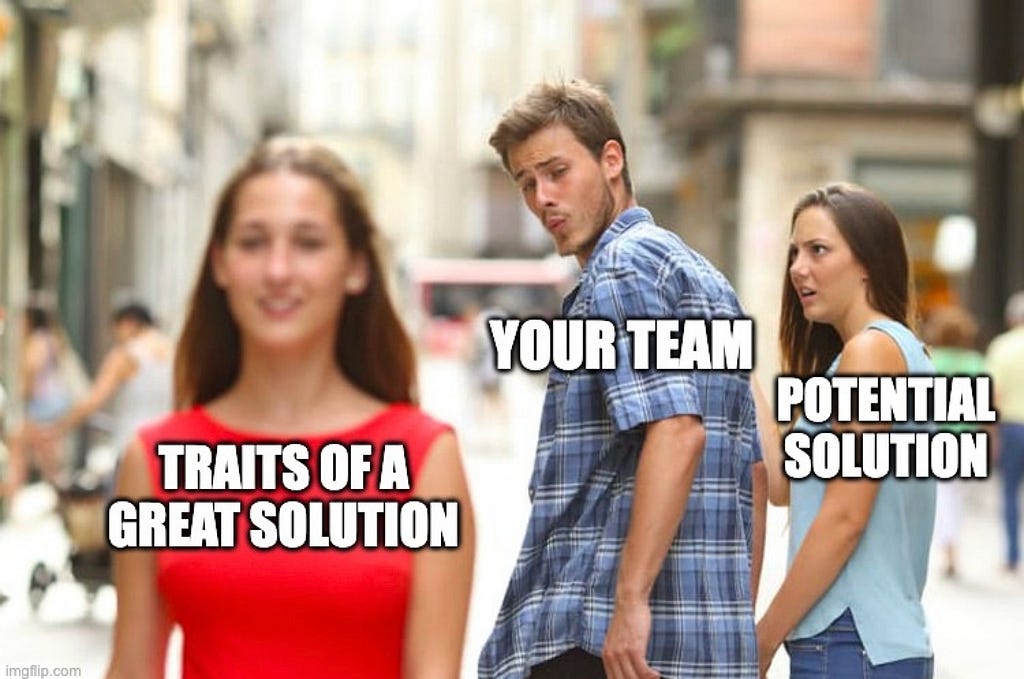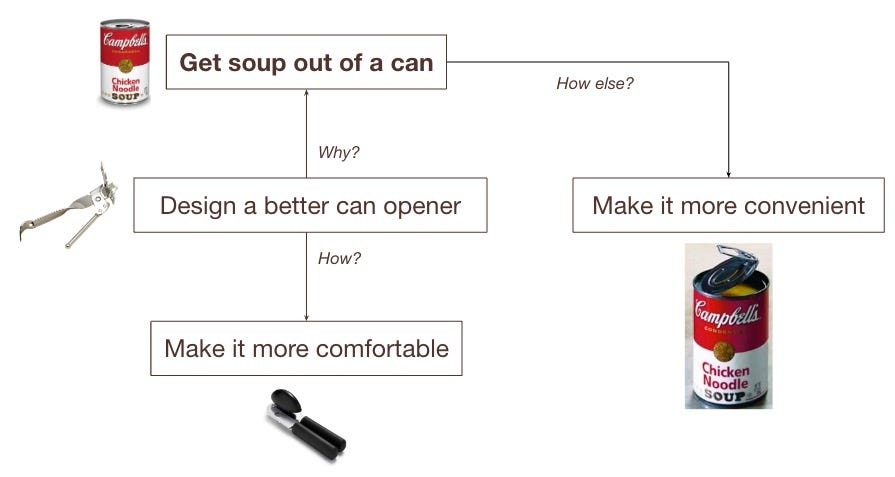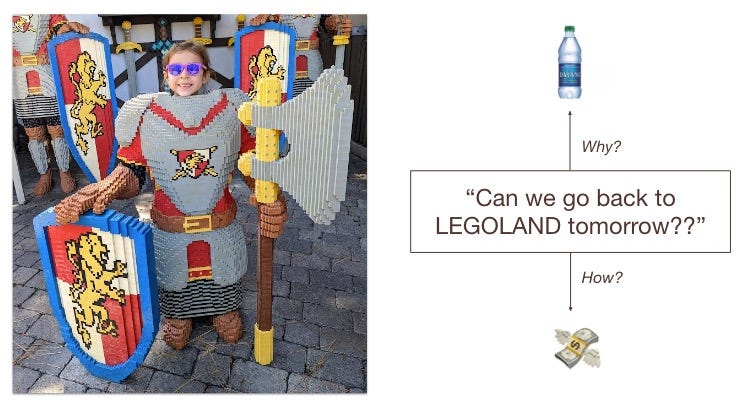3 strategies to escape narrow framing, in work and in life.

UX research is about informing product decisions, from what problems to solve, to how to solve them. To be effective at informing decisions, UX researchers need strategies that address barriers to good decision-making.
So what stands in the way of sound decision-making? In Decisive: How to Make Better Choices in Life and Work, Chip Heath and Dan Heath identify narrow framing (having a too-limited view of the options available to you) as a primary “villain” of decision-making.
In horse racing, blinders help horses focus on the path in front of them. In work and in life, there are times when it’s appropriate to put on blinders, such as when it’s time to execute on a set plan. At other times, however, it would be detrimental to put on blinders too soon, such as when premature convergence on an option causes you to miss out on better options.
According to Decisive, a tell-tale sign of narrow framing is when a decision is framed as “whether or not.” For example, a team may ask “Should we build this feature or not?” when they would be well served to first consider a wider range of solutions to the problem at hand.
If your choice is framed as a binary one between A or B (or between A or nothing), you’re likely in a suboptimal decision-making situation. You simply don’t have many options to pick from. In this article, I’ll share three practical techniques anyone can use to combat narrow framing, in work and in life.
1. Understand the problem fully by listening to stories 💬
The big idea: Learn about the broader problem space
Try asking: “Can you tell me about a time when…?”
While divergent thinking is often associated with solving problems, this first technique is focused on avoiding narrow framing when it comes to understanding problems. If you have a narrow view of the problem, you’ll create an incomplete solution.
A simple, yet powerful way to broaden your understanding of a problem is to ask people to tell you a story about a time when they encountered the problem. Understanding how problems are experienced and addressed (including the constellation of people and tools involved) provides valuable information for conceiving of effective solutions.
For example, our team at Google Health used this story-gathering approach to explore the topic of data quality in the context of developing AI that detects disease. Instead of asking AI practitioners “How do you monitor data quality?”, we said, “Describe a time when you had concerns about data quality.”
- Asking “How did it come to your attention?” helped us understand early signals we might proactively monitor.
- Asking “What did you do next?” helped us understand interventions we might support.
- Asking “How have your processes changed over time?” helped us understand what practices we might help scale.
Gathering stories is quick and straightforward. You don’t have to spin up a dedicated foundational research workstream to collect stories. You can take 5 minutes out of a targeted usability study to gather a story about the broader product or the problem it’s solving.
Bonus tip: Ask for stories from stakeholders to understand their experiences and needs. When I’m working with a new stakeholder, it’s incredibly enlightening to hear their response to “Tell me about a time you had a great / not-great experience with a UX researcher.”
2. Extract the best traits from a wide range of options 👀
The big idea: Consider multiple options at once
Try asking: “What are the best traits of these options?”
Once you have clarity on the problem you’re solving, the next step is to generate a large number of possible solutions to consider. In a nutshell, this second technique is about intentionally evaluating multiple options at the same time in order to articulate characteristics of a great solution.
Decisive describes a study that compared two design iteration approaches: “parallel prototyping” (testing and iterating multiple designs at a time) vs. “serial prototyping” (focusing on one design at a time). In the “parallel” condition, designs were rated as more diverse and creative, and performed better in live experiments. Furthermore, getting feedback on the strengths and weaknesses of multiple designs at the same time helped designers operate at a more abstract level. As Heath and Heath elaborate, “(The designers) were learning something useful about the shape of the problem. They were able to triangulate among the features of their three (designs) — combining their good elements and omitting the bad.”
One way to easily add more options to the consideration set is to use competitors’ products as “free prototypes”. As the article stresses, “The goal is to learn which parts of each product are more and less successful — not to pick a winner.” Understanding what works (and what doesn’t) is richer when there are more options to compare.
Focusing on winning traits rather than winning solutions may require a significant mental shift, but doing so will help you broaden your horizons rather than prematurely fixating on initial ideas. And this broadening will be principled, since you’ll be asking not just “What other options are there?” but specifically “What other options are there that embody these important traits?”

3. Ask “Why?” before jumping to “How?” 🤔
The big idea: Understand why to create more options for how
Try asking: “Why? What makes [option] a good idea?”
The last technique provides a practical way to identify more options to consider, especially when you’re in conversation with someone who offers a specific idea. The ladder of abstraction is a simple but powerful tool for moving a conversation “up” to focus on “why”, or “down” to focus on “how.”
The design of soup cans is used to demonstrate the power of abstraction laddering in “Mental models for designers.” If you focus on “Design a better can opener,” you will iterate on can openers, perhaps by exploring ways to make them more comfortable to use. However, if you move up the ladder to ask why you’d design a better can opener, it would lead you to the goal of “Get soup out of the can.” With that new goal as the focal point, you can ask, “How else could we get soup out of the can?”, thus leading to an innovation such as the pop-top can (which requires no can opener at all).

Abstraction laddering is an excellent tool to use when responding to others’ specific ideas. You can use it to encourage someone to broaden their aperture without it coming across as rejecting them or their idea. For example, if a user suggests a certain feature or design, you don’t have to take it at face value; by asking “What’s good about that idea?” or “How would that be beneficial?”, you surface the “why” behind their idea. That can then spur an exploration of how else to achieve the benefits associated with their idea.
Similarly, abstraction laddering can facilitate a productive discussion about someone’s ideas about your work as a UX researcher. If a stakeholder requests a specific research method, ask what they hope to gain from using that method. It can be easy to have a knee-jerk reaction to certain methods (focus groups or surveys, anyone?). Instead of focusing on the merits (or lack thereof) of a suggestion, reorient the conversation to the larger goal at hand. That will also help your own response shift from reactionary to investigatory.
Another way to think about abstraction laddering is that it helps you shift from leading with nouns (What product / feature / idea to pursue?) to leading with verbs (What should the solution do, or enable people to do?) and adjectives (What are traits of a great solution?). You then use this set of valuable verbs and adjectives to generate a wider range of nouns (i.e. potential solutions) to consider.
Laddering in life: A personal example
Laddering can be a valuable tool not just at work, but also in other areas of your life.
Our family visited LEGOLAND last summer. At the end of the day, my daughter excitedly asked, “Can we come back tomorrow?” My instinct was to explain why that was an impractical idea, but instead I asked, “Why do you want to come back?”
She replied that she really liked the big plastic bottle of water she got at lunch, and wanted another one. The single-use water bottle was a treat since she usually drinks out of the same type of reusable bottle every day.
Moral of the story: Don’t assume you understand why someone is asking for something, whether they’re a user, a stakeholder, or a 6-year-old!

Wrapping up with 3 haikus
I’d like to wrap up with haikus that encapsulate the essence of the three techniques shared in this article:
Understand the problem fully by listening to stories 💬
Tell me a story
So I don’t focus on just
Part of the problem
Extract the best traits from a wide range of options 👀
“Whether or not”? No!
Consider many options
To find winning traits
Ask “Why?” before jumping to “How?” 🤔
Got an idea? Great!
Knowing “why” helps us create
More options for “how”
Whether in work or in life, on your own or in response to others’ ideas, use these three simple techniques to take the blinders off. You’ll develop a broader understanding of problems, and imagine a wider range of possible solutions.
Better decisions start with broader options was originally published in UX Collective on Medium, where people are continuing the conversation by highlighting and responding to this story.

Leave a Reply